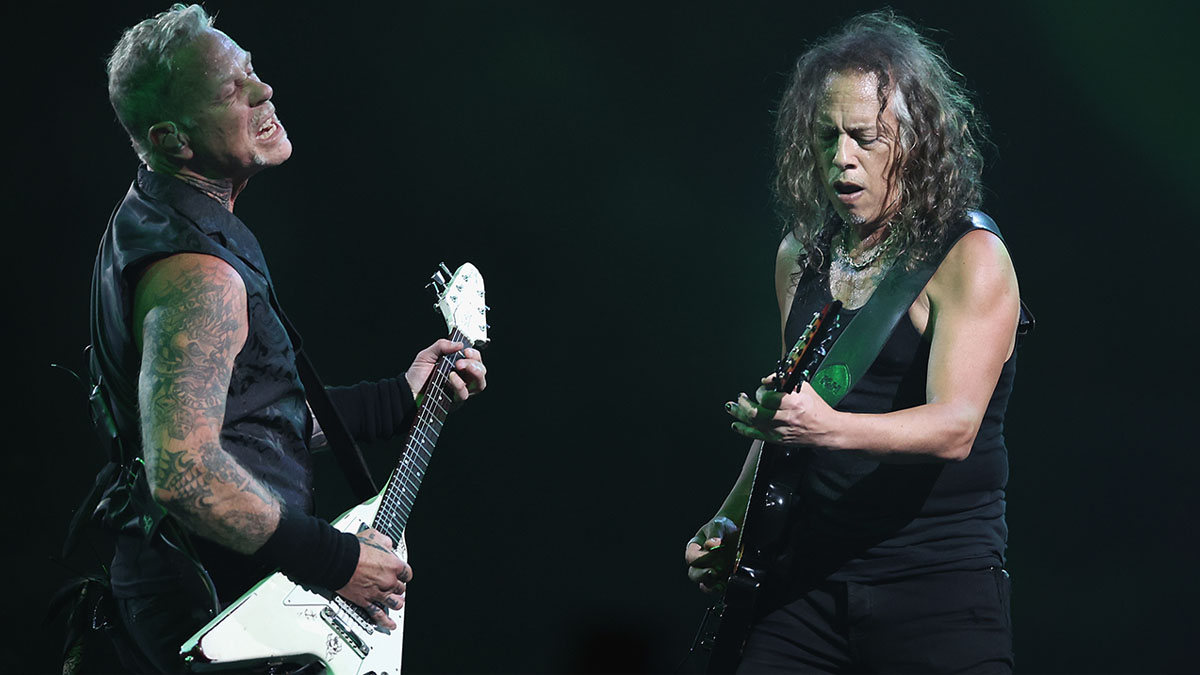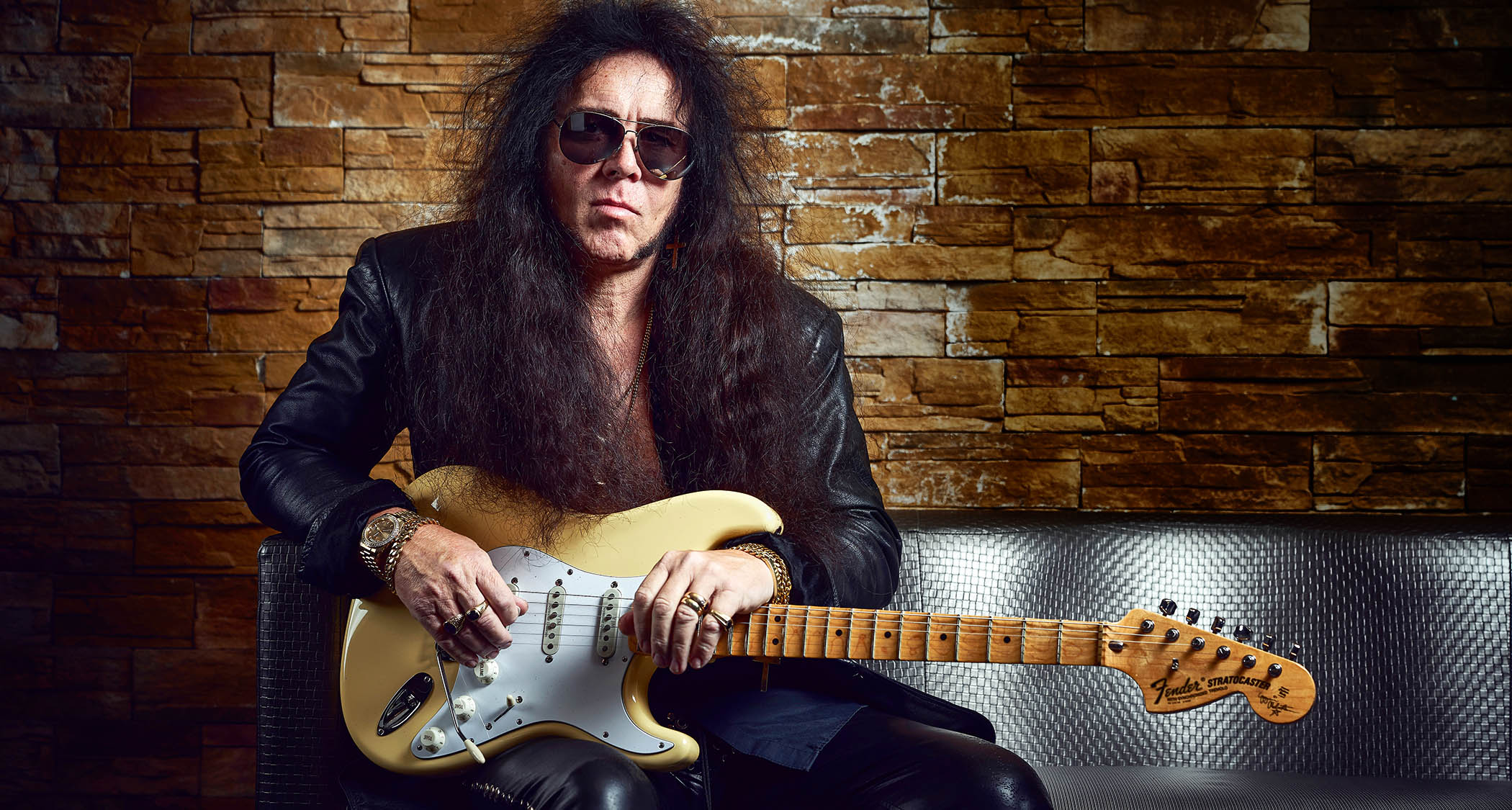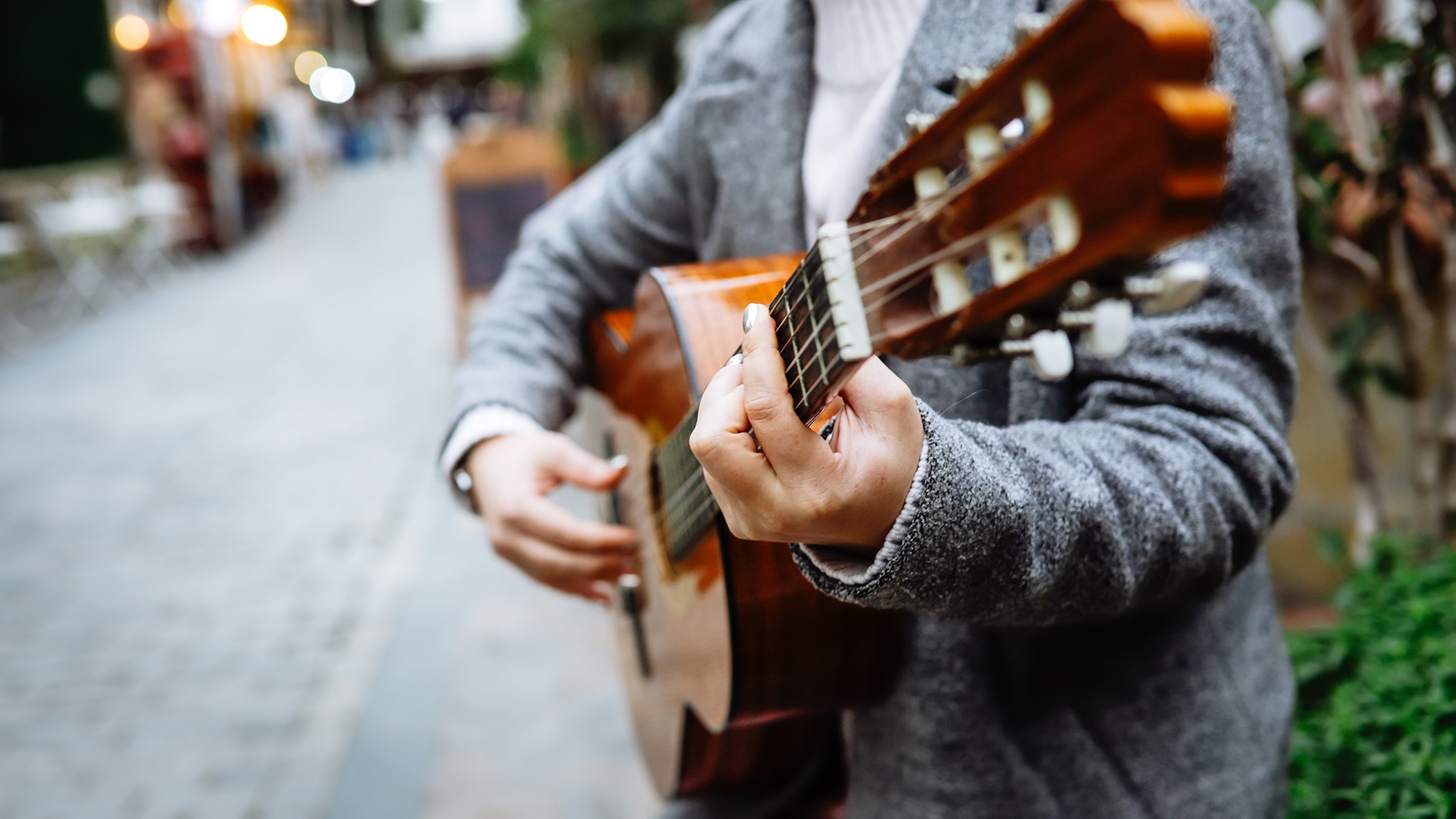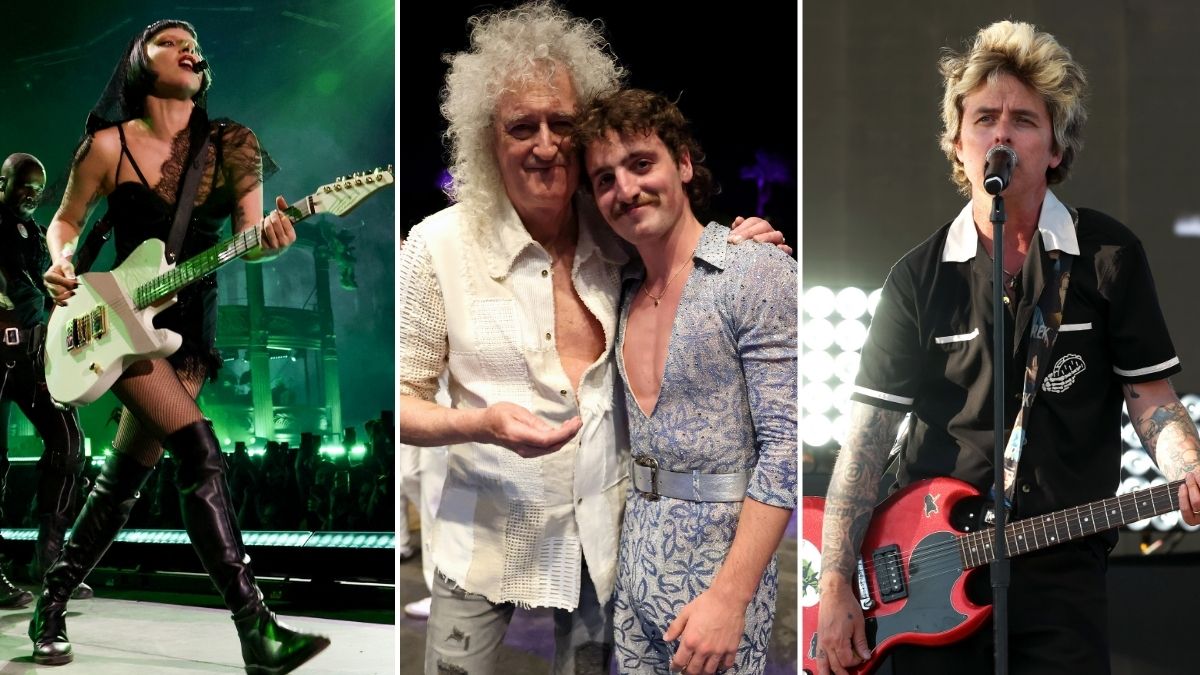“We can do things with a Fractal that we can’t do with a real amp”: Kirk Hammett’s guitar tech reveals why Metallica converted to Axe-Fx
The Bay Area metal behemoths’ 2013 Freeze ‘Em All gig in Antarctica opened their eyes – and ears – to the potential of digital amp modeling

When the story of Metallica’s metal guitar tone is told it will no doubt be the Mesa/Boogie Mark IIC+ that gets all the headlines. That, after all, gave Master of Puppets its crunch.
There will be mention of the snaggletoothed Kill ‘Em All Marshall amp crunch of the early ‘80s, and latter-day enormo beasts from Diezel and Fortin, but the digital revolution has long arrived big-style for the world’s biggest metal band, and Kirk Hammett’s long-serving tech, Justin Crew, has revealed in an interview with Doug Doppler’s YouTube channel how the band were converted to Fractal amp modelers.
For Frank Sinatra, it all happened in Monterey. For Metallica, it was Antarctica, where the Bay Area metal institution became the first band to play all seven continents with their 2013 Freeze ‘Em All concert. Here was the band who wrote Trapped Under Ice being liberated from the vagaries of tube amp maintenance – or their techs, at least – while playing in the most unforgiving conditions imaginable.
Crew tells us how this historic gig in Antarctica necessitated a rethink. With only solar power to work from, they went for Fractal Axe-Fx amp modelers, with digital providing 100 percent consistency, and in doing so, they discovered all-new possibilities for how the band could work. They have not looked back since.
“With the Fractals, it’s identical across the board,” say Crew, whose career as a tech lends credence to the theory of nominal determinism. “We are not mic’ing up speakers that are wet because it’s humid. It’s all very, very consistent.”
Moving to digital has changed Crew’s workflow, too. In the past, when Hammett would solely be using tube amps, he would have a Mesa/Boogie in one ear and the Fortin in the other so that he could hear the difference which, if any, was having an issue. “If I heard something crackle, I could tell instantly which it was,” says Crew. “Boogie was on the left. The Fortin was on my right.”
We have embraced technology and it has been good to us
Justin Crew
When walking us through the evolution of Hammett’s live rig in his 25-plus years with the band, Crew does note that the Fortin Meathead never let him down once. But with tube amps and outboard gear there was an element of noise reduction that is not an issue with digital. Pre-Fractal, they would set aside a day to ready each player’s rig for showtime to try to cut down on the hiss from pedalboards and amps.
Get The Pick Newsletter
All the latest guitar news, interviews, lessons, reviews, deals and more, direct to your inbox!
“We don’t have to do that now. We have embraced technology and it has been good to us,” says Crew. “And when Greg Price, our front-of-house engineer, got onboard he was a little sceptical till he heard them. He was a little concerned. He walked up to Chad and I at the front of the stage. I remember, he said, ‘Guys, all you need to do with those is just turn them up.’ So he was very happy.”

Crew argues that it is not just the consistency of performance that makes them a no-brainer for stadium shows; it gives them more signal routing options, and makes the show run smoother on the night.
“When they’re in the tuning room, they’ll play some of the songs that they’re going to play at the show so that when they walk out, with their ears in, it sounds the same,” he says. “They’re comfortable. The first chord sounds just as it did in the tuning room, because we can do things with a Fractal that we can’t do with a real amp.
“We can do funky things and put delays and reverbs after the amp and before the speaker, or we can put a volume pedal between the speaker and the amp, which you can’t do with a tube amp – well not without a lot of smoke – so we can have more of a studio-version of a sound if we need it.”
Hammett's live sound on the Fractal is modeled from his Fortin Meathead and his Mesa/Boogie Dual Rectifier. He has been an open book of late in sharing tone secrets, revealing that, even though he has his own signature Dunlop Cry Baby wah pedal, his favorite wah is Dimebag's model.
He even went as far as to reveal his secret tone weapon on 72 Seasons telling Total Guitar, like Angus Young and David Gilmour before him, has deployed a SoloDallas Schaffer Replica EX Tower unit as the secret sauce on his studio lead tone.
“It’s really full-sounding – there’s a lot of mid, but it doesn’t sound harsh or too bold or solid,” he said. “The harmonic distortion is amazing. I hit a note on Greeny and it literally will never quit.”
Jonathan Horsley has been writing about guitars since 2005, playing them since 1990, and regularly contributes to publications including Guitar World, MusicRadar and Total Guitar. He uses Jazz III nylon picks, 10s during the week, 9s at the weekend, and shamefully still struggles with rhythm figure one of Van Halen’s Panama.
“The original Jordan Boss Tone was probably used by four out of five garage bands in the late ’60s”: Unpacking the gnarly magic of the Jordan Boss Tone – an actual guitar plug-in that delivers Dan Auerbach-approved fuzz
“This is a powerhouse of a stompbox that manages to keep things simple while offering endless inspiration”: Strymon EC-1 Single Head dTape Echo pedal review
![Metallica - Freeze 'Em All: Live in Antarctica (FULL CONCERT) [HD] - YouTube](https://img.youtube.com/vi/2Hi2u98VKxc/maxresdefault.jpg)












